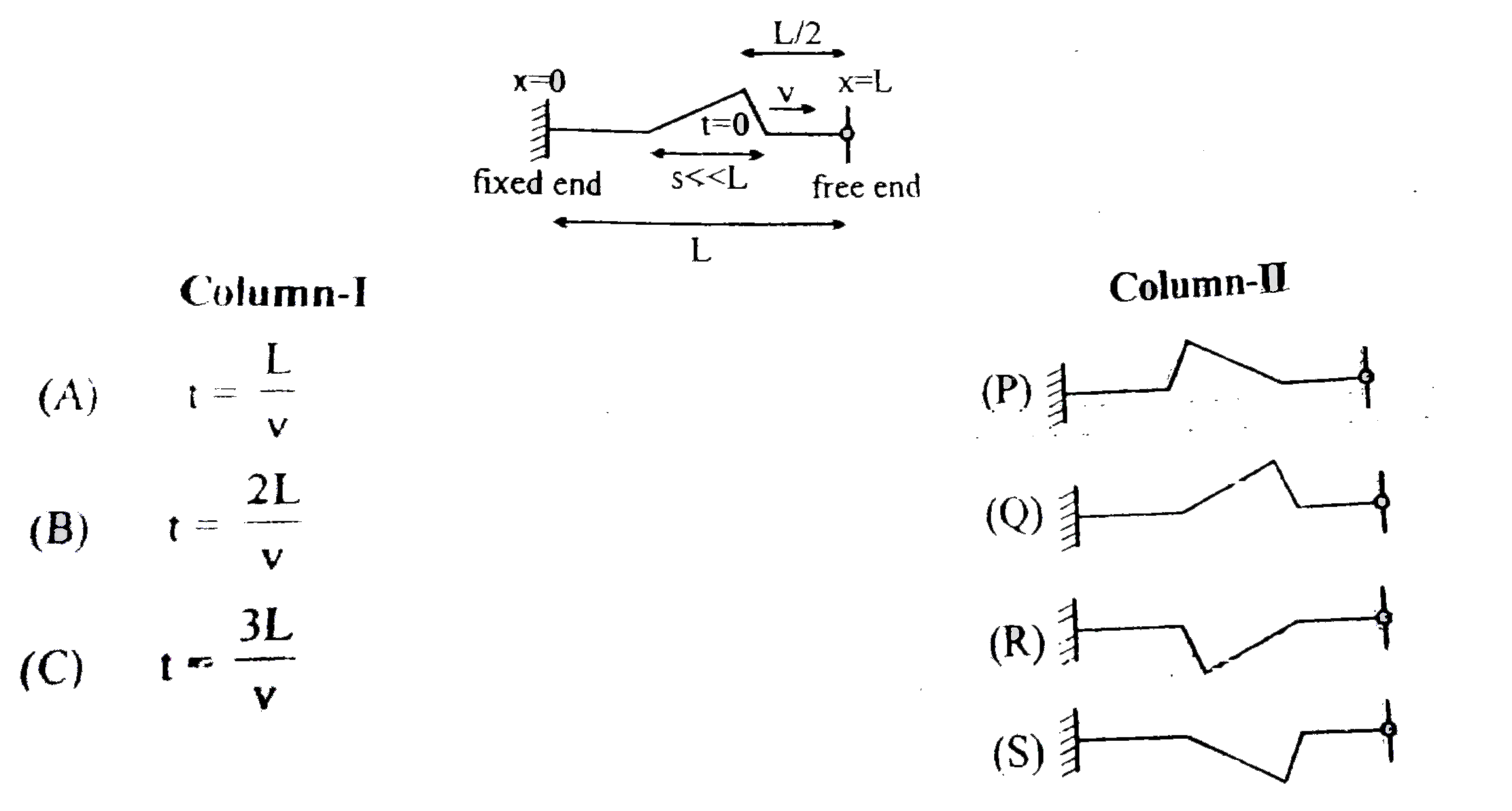A uniform string of length 'L' is suspended from a point on the ceiling. A small wave pulse is now introduced at its lowest end and it starts moving up towards the ceiling.
(i) What will be the speed of the wave pulse when it has moved up a distance x?
(ii) How much time does this wave pulse take to reach the ceiling?
(i) Let the mass per unit length of the string be μ. Consider a section of the string of length x (x measured from the lower end)
The mass of this section is μx and hence its weight is μx. This weight is balanced by the tension T at the piont x distant x from the lower end.
Hece T=μxg
the wave velocity v is now given by
or v=√xg
(ii) as the wave pulse climbs up, x changes from zero to L.
now, V=dxdt or dx√x=√gdt
Integrating, we get
∫L0dx√x=√g∫t0dt⇒2√x∫L0=√gt
or 2√L=√gt or t=2√Lg.

Topper's Solved these Questions
- WAVESBOOK - AAKASH INSTITUTECHAPTER - WAVESEXERCISE - Try Yourself
64 Videos
- WAVESBOOK - AAKASH INSTITUTECHAPTER - WAVESEXERCISE - Assignment (Section-A)
55 Videos
- WAVE OPTICSBOOK - AAKASH INSTITUTECHAPTER - WAVE OPTICSEXERCISE - Assignment (Section-J (Aakash Challengers question))
1 Videos
- WORK, ENERGY AND POWERBOOK - AAKASH INSTITUTECHAPTER - WORK, ENERGY AND POWEREXERCISE - Assignment (SECTION - D)
15 Videos
Similar Questions
(a) A string of mass 'm' and length 'L' is suspended from the ceiling and a mass M is hanged from it. Transverse waves are produced at its lowest point (nearM) having wavelength λ, find its wavelength at a distance x from the upper point.
(b) In the previous question, what time a transverse pulse will take to reach from it lowest point to its uppermost point , if the mass M is not hanged from it
View SolutionA heavy but uniform rope of lenth L is suspended from a ceiling. (a) Write the velocity of a transverse wave travelling on the string as a function of the distance from the lower end. (b) If the rope is given a sudden sideways jerk at the bottom, how long will it take for the pulse to reach teh celling ? (c ) A particle is dropped from the ceiling at the instant the bottom end is given the jerk where will the particle meet the pulse ?
View Solution
Knowledge Check
A uniform string of length 10 m is suspended from a rigid support A short wave pulse is introduced at its lowest end it starts moving up the string the time taken to reach the support is (take g=10m/sec2)
A1 secB2 secC2√2D4 secA uniform string of length 20m is suspended from a rigid support. A shirt wave pulse is introduced at its lowest end. It starts moving up the string. The time taken to reach the support is :
(take g=10ms−2)A(a) 2√2sB(b) √2sC( c ) 2π√2sD(d) 2sA heavy but unifrom rope of length L is suspended from a celling . A particle is dropped from the celling at the instant when the bottom end is given a transverse wave pulse. Where will the particle meet the pulse.
Aat a distance 2l3 form the bottomBat a distance L3 from the bottomCat a distance 3L4 from the bottomDnone of the above
A wave train has the equation y=4sin(30πt+0.1x) where x is in cm is the frequency of the source? How much time does a wave-púlse take to reach a point 30 cm from it ?
View SolutionA small pulse travelling with speed v in a string is shown at t=0 moving towards free end. Select the shape of string column-II at moments shown in column-I

View SolutionThe block of mass m0=μL is attached to a uniform string of mass M=μL and length L as shown in the figure. If a wave pulse is produced near the block, then the time it taken to reach the ceiling is

View SolutionA rope of length L and uniform linear density is hanging from the ceiling. A transverse wave pulse, generated close to the free end of the rope, travels upwards through the rope. Select the correct option:
View SolutionA perfectly elastic uniform string is suspended vertically with its upper end fixed to the ceiling and the lower end loaded with the weight. If a transverse wave is imparted to the lower end of the string, the pulse will
View Solution
